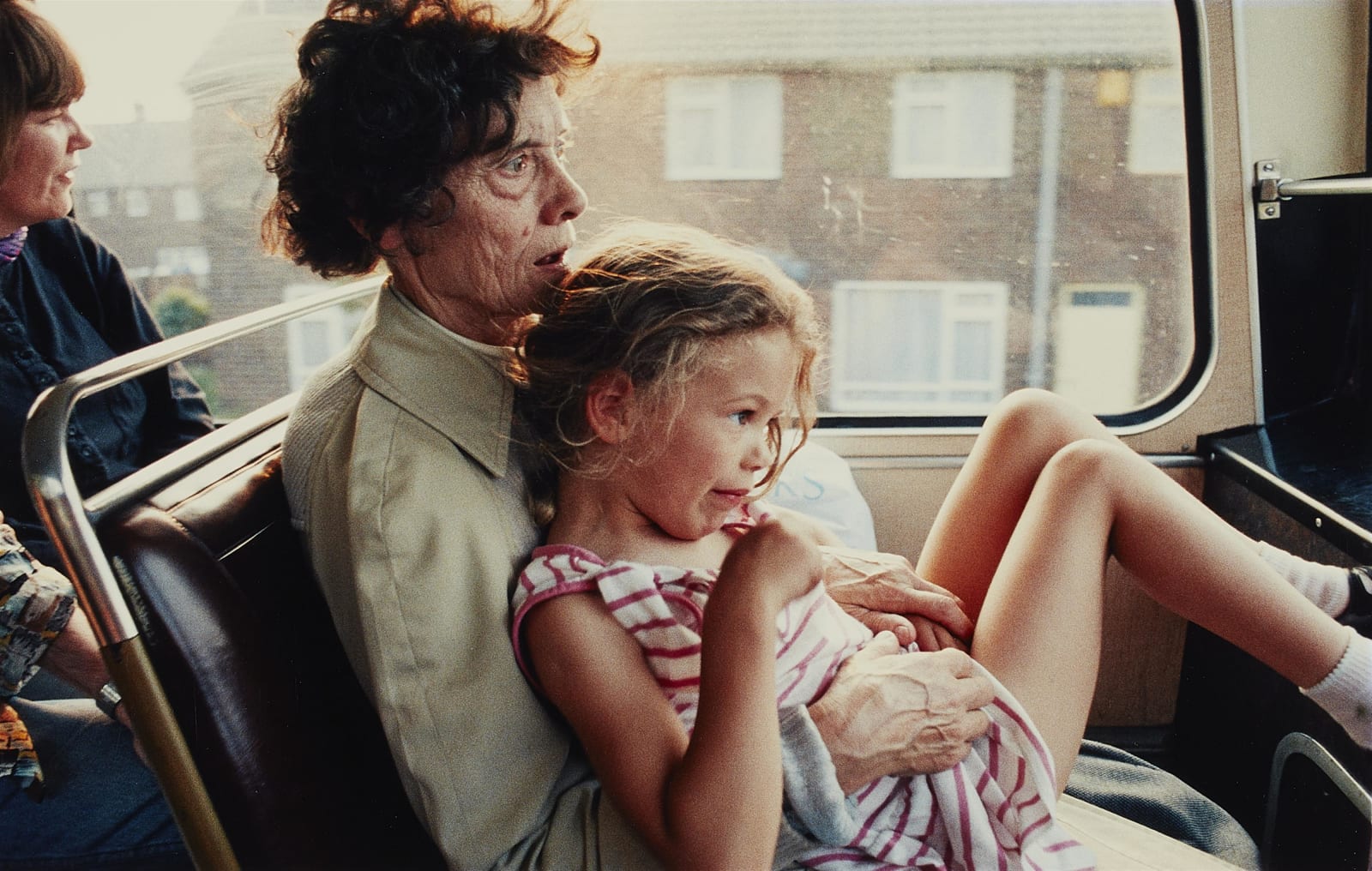Tom Wood
Towards Netherton (from the series: Bus Odyssey), 1989
Chromogenic print on Fujicolor-Professional paper
Image 39 x 58.3 cms
Paper 47.3 x 60.7 cms
Paper 47.3 x 60.7 cms
Photographer's edition stamp, inscribed on the reverse of the frame.
From the edition of 9.
From the edition of 9.
270669
Provenance
Galerie Thomas Zander, Cologne
Exhibitions
Suermondt-Ludwig-Museum, Aachen October 20, 2001 - January 6, 2002Kunsthalle Wilhemshaven February - April 2002
Kasseler Kunstverein June 8 - September 15, 2002
Städtische Galerie Wolfsburg Spring 2003
Literature
Sylvia Böhmer (ed.), Tom Wood. Bus Odyssey. Fotografien 1978 bis 1998, exhib.cat. Suermondt-Ludwig-Museum, Aachen i.a., Ostfildern-Ruit 2001, ill. on front cover
Tom Wood, Bus Odyssey, Hatje Cantz, 2001 (illustrated on the cover and full page)
Tom Wood. 101 Pictures, RRB Photobooks, 2020 (illustrated full page)
This photograph is one of Tom Wood's best known images from the series Bus Odyssey, the subject of a book in 2001: Bus Odyssey presents a set of images shot...
This photograph is one of Tom Wood's best known images from the series Bus Odyssey, the subject of a book in 2001: Bus Odyssey presents a set of images shot by the British photographer Tom Wood during 20 years of travel on the busses of Merseyside. Wood provides a visual impression of Liverpool's population: lined, weary faces, changing fashions, a rampant crush of day-trippers defied by a surly constructur. Although Wood has been exclusively photographing in Liverpool, his focus on human presence in public space is not documentary. The bus photographs are extraordinary on various levels: They create a view of the city from the human perspective of public transport. The streets, people and unspectacular situations they depict become of general interest. The bus itself is presented as a predominantly visual space, a metal box with vast areas of glass. The inherent narrative generated by a bus in motion seems suspended, with time unfolding in the pictorial space itself. Wood takes us through the Merseyside of the eighties and nineties on a multi-dimensional conceptual and aesthetic journey that can honestly be described as Joycean.



